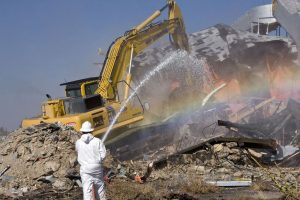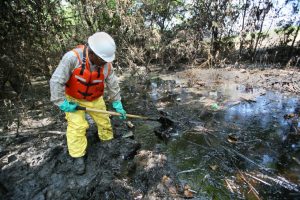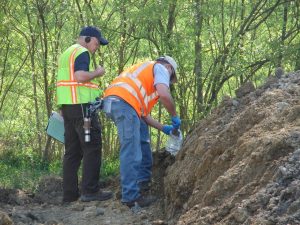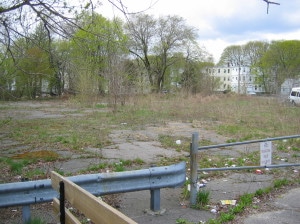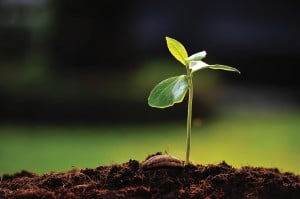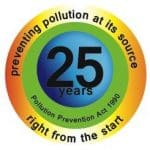 Pollution Prevention Week 2015, which celebrates the 25th anniversary of the Pollution Prevention (P2) Act, was held September 21-27, 2015. The P2 Act was implemented in 1990 in an effort to address the significant impact that pollution has on our environment. It is inordinately easier to prevent a problem from happening than to fix an already existing problem, and below we’ve compiled a list of some practical steps we can all take to reduce pollution as well as our individual and collective environmental footprints.
Pollution Prevention Week 2015, which celebrates the 25th anniversary of the Pollution Prevention (P2) Act, was held September 21-27, 2015. The P2 Act was implemented in 1990 in an effort to address the significant impact that pollution has on our environment. It is inordinately easier to prevent a problem from happening than to fix an already existing problem, and below we’ve compiled a list of some practical steps we can all take to reduce pollution as well as our individual and collective environmental footprints.
Recycle
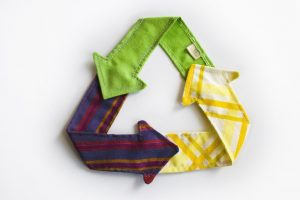 The average American generates over four pounds of trash every day and about 1.5 tons of solid waste per year, 75% of which is recyclable. The EPA estimates that we only recycle 30% of it, even though over 87% of Americans have access to a curbside recycling program. In a single year, Americans throw out about 28 billion bottles and jars as well as about 36 billion aluminum cans, the scrap value of which is estimated to be an astonishing $600 million. Glass containers and cans can go from the recycling bin to a store shelf in just 30-60 days, and 20 recycled cans can be made with the energy needed to produce one new can. Recycling takes little effort yet yields significant impact. Here are some ways to recycle:
The average American generates over four pounds of trash every day and about 1.5 tons of solid waste per year, 75% of which is recyclable. The EPA estimates that we only recycle 30% of it, even though over 87% of Americans have access to a curbside recycling program. In a single year, Americans throw out about 28 billion bottles and jars as well as about 36 billion aluminum cans, the scrap value of which is estimated to be an astonishing $600 million. Glass containers and cans can go from the recycling bin to a store shelf in just 30-60 days, and 20 recycled cans can be made with the energy needed to produce one new can. Recycling takes little effort yet yields significant impact. Here are some ways to recycle:
- Participate in an office recycling program for paper, toner cartridges, and kitchen waste
- Recycle all plastics, glass, metals, and paper with a single stream recycling program
- Recycle used motor oil, eyeglasses, cell phones, electronics, mattresses, and other household waste at appropriate disposal sites
- Donate used clothing, furniture, household items, and books to charitable organizations
- Start a compost pile for kitchen waste, or better yet…
Reduce greenhouse gas emissions by cutting food waste

In the United States, food waste is the largest single source of waste, with 30-40% of the food supply wasted, equaling more than 20 pounds of food per person per month. According to a Food and Agriculture Organization of the United Nations (FAO) report, about a third of the food produced for human consumption worldwide — about 1.3 billion metric tons — is wasted, accounting for the equivalent of about 3.3 billion metric tons of greenhouse gas emissions. To put it into perspective, that’s about twice the amount of carbon emitted from America’s transportation sector and close to twice the annual emissions of the entire country of India. And all that wasted food equates to a lot of wasted water, as raising and growing food requires an exorbitant amount of water. To produce one pound of beef takes about 1,800 gallons of water, and to produce a pound of rice takes about 400 gallons. In fact, the amount of food we waste also wastes about 250 cubic kilometers worth of ground and surface water — an amount about three and a half times the volume of Lake Mead when full.
Reducing the amount of food we throw away starts at the individual level. Plan meals for the week and make a shopping list — and stick to it. Be sure to eat any leftovers for lunch the next day, which will also save money (and calories!) when compared with eating out. Donate any unused food to food banks and shelters. Request “doggie bags” from restaurants, freeze fresh foods before they spoil, and use aging fruits in smoothies and baking. These are all simple yet effective ways to greatly reduce the amount of food we waste.
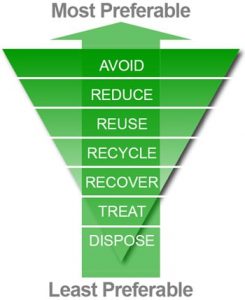 Reduce usage and carbon footprint
Reduce usage and carbon footprint
In one year, Americans fill landfills with trash equivalent to the weight of 88 million cars and produce enough trash to circle the earth 24 times. We have the highest per capita water usage in the world, and we use 26% of the world’s energy. In addition, we produce a significant amount of hazardous waste, which is any liquid, solid, or gas that may cause significant threats to human health or the environment if improperly managed. Sources of hazardous waste include industry, research, medical, household, chemical producers, agriculture, and mining, as well as many others. Hazardous waste is often disposed of in landfills or injection wells, where the toxic substances can leak into surrounding groundwater. Groundwater is a major source of drinking water and, once it is contaminated, it is extremely difficult, costly, and sometimes even impossible to remove pollutants. Recycling and waste minimization is the best — and easiest — way to deal with hazardous waste. Changing our daily habits is a simple way to reduce our usage and environmental impact, and to lessen the amount of pollution we produce.
- Use reusable grocery and shopping bags
- Install programmable thermostats to automatically turn down the heat or air conditioning at night
- Replace incandescent lights with fluorescents or LEDs
- Install water-efficient toilets, faucets, and shower heads
- Fix all household leaks
- Plant drought-resistant grass and plants to reduce water needs
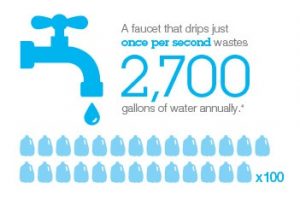 Only run washing machines and dishwashers when they are full
Only run washing machines and dishwashers when they are full- Power down and unplug electronics when not in use
- Print double-sided on recycled paper, and implement a “think before you print” mindset
- Dispose of all household hazardous waste including batteries, cleaning fluids, paint thinners, pesticides, and mercury items at a dedicated collection site
- Purchase non-toxic products with minimal packaging
- Use little to no fertilizer or pesticides, especially near rivers, streams, lakes, and ponds
- Buy locally, including from farmers, businesses, and manufacturers, as it reduces fuel needs and transportation emissions and supports the local economy
- Carpool, bike, walk, or take public transportation to work when possible
Protect our water supply — careful what you flush!
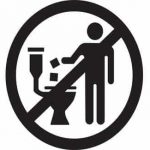 Speaking of water contamination, there is another source of potential water pollutant that is in every American’s home: the toilet. It seems like the perfect place to dispose of all things unsightly. Unfortunately, after the whoosh and the swirl, the item doesn’t simply disappear. In fact, it travels a complex path. What we flush down our toilets travels through sewer pipes to wastewater treatment plants, where it is treated and piped back into our lakes and streams. Therefore, we need to be mindful of protecting not only our pipes and sewer systems, but also our environment. Private septic systems are also at risk for clogging, failing, and for leaching toxins back into the water supply. The only items that should ever be flushed down a toilet are human excretions and plain old toilet paper. To show some concrete reasons why the toilet shouldn’t be considered a garbage disposal, we’ve made a list of commonly flushed items that wreak havoc on wastewater systems and our ecosystem.
Speaking of water contamination, there is another source of potential water pollutant that is in every American’s home: the toilet. It seems like the perfect place to dispose of all things unsightly. Unfortunately, after the whoosh and the swirl, the item doesn’t simply disappear. In fact, it travels a complex path. What we flush down our toilets travels through sewer pipes to wastewater treatment plants, where it is treated and piped back into our lakes and streams. Therefore, we need to be mindful of protecting not only our pipes and sewer systems, but also our environment. Private septic systems are also at risk for clogging, failing, and for leaching toxins back into the water supply. The only items that should ever be flushed down a toilet are human excretions and plain old toilet paper. To show some concrete reasons why the toilet shouldn’t be considered a garbage disposal, we’ve made a list of commonly flushed items that wreak havoc on wastewater systems and our ecosystem.
- Disposable Diapers
Not only do they cause instant clogging, but they also are loaded with toxic coagulating chemicals that simply shouldn’t be in our water supply. - Feminine Products
Feminine products are akin to diapers and contain chemicals as well as non-biodegradable parts, and they are responsible for the majority of household clogs. All of these items should go in the trash – including the applicators. - Band-Aids
They are non-biodegradable and a biohazard and should be thrown in the trash. - Automotive Fluids, Paint, Solvents, Sealants, and Thinners
All of these items contain toxic chemicals that contaminate water. Please dispose of them in an appropriate manner, not down the toilet. 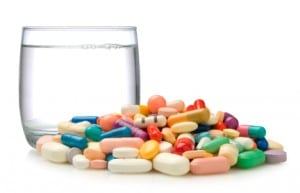 Unused Medications
Unused Medications
While flushing seems like a great idea for unused meds – after all, we don’t want them getting into the wrong hands – it is actually extremely dangerous. Flushed meds negatively impact ecosystems by seriously disrupting reproductive cycles of fish, and flushed antibiotics encourage the evolution of drug-resistant microbes. Water treatment facilities do not filter meds, and they are entering our water supply at an alarming rate. Medications should be disposed of safely in the garbage or through an approved take-back site. Please check www.takebackyourmeds.org for more info.- Cigarette Butts
Cigarettes are loaded with toxic chemicals that end up in our water supply when the butts are flushed. Don’t flush, or better yet, don’t smoke! - Cat litter
Most cat litter is made from clay and sand, which should absolutely never be flushed down any toilet, and cat feces contains toxins and parasites that shouldn’t be in our water supply. - Pets
Give the goldfish, mouse, or gerbil a good old-fashioned burial. Decomposing animals cause blockages and release toxins into our water supply. - Other items of note: wipes (even if they say flushable!), cooking fats, paper towels, cotton balls, hair, cosmetics, cleaning supplies, food, and chewing gum. When in doubt, throw it out!
There are myriad ways to improve our environment by reducing the pollution we produce, and the above ideas are a small sampling of how we can be greener in our daily lives. P2 Week is the ideal time to take a look at our daily habits and patterns and to see what steps we can take to lessen our environmental impact. If every person made even a small effort to be more eco-conscious, the total impact would be staggering. Whether it is protecting our water supply, reducing greenhouse gas emissions, or using fewer toxic products, let’s all implement a few small changes this week to protect our environment and reduce pollution. Happy P2 Week!

